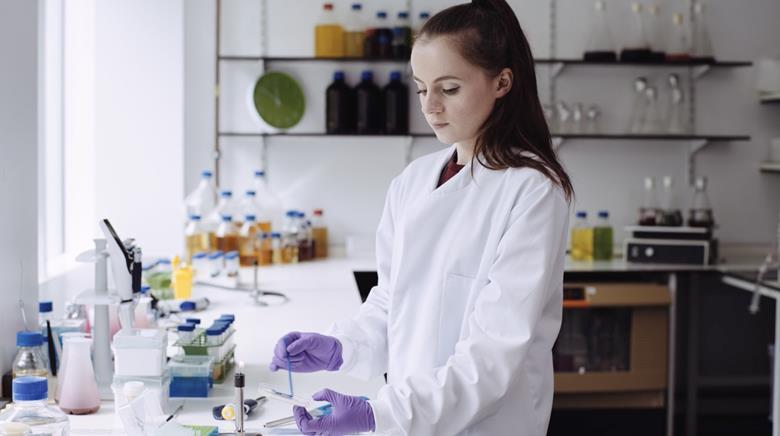A day in the life of a pipeline lead

A dip into the world of colourful fabrics and microbial engineering - Alicia Russell of Colorifix shares her experience designing, coordinating, and crafting pigments for a spectrum of colours.
I work in the microbial engineering division, which is the team responsible for designing DNA pathways, building genetic tools and engineering strains to produce the best possible colours. One of my main roles as pipeline lead is coordinating a DNA assembly pipeline which generates the genetic constructs that are ultimately required to make our colourful strains.
I help to oversee the transition of DNA and strains across the wider team’s workflows and manage a small team who are key to making all of this happen in the lab. I also work on pathway designs for a family of pigments that have potential to produce a range of different colours on fabrics.
Microbiology was always the area of science I was most interested in - I studied biomedical science at university and in my third year worked on a research project studying natural product biosynthesis in Streptomyces bacteria.
From this point I became fascinated by how and why bacteria are capable of making so many useful molecules, particularly antibiotics. I loved the idea of studying genetic pathways to discover new molecules, so I pursued this area of research during my PhD at the John Innes Centre. When I came across Colorifix, I was really excited by the idea of engineering DNA pathways that encode colourful natural products that could be used as dyes.
Scientific advancements
The scientific breakthroughs are big landmarks - it can take hundreds of genetic designs and enzyme variants to finally get a pathway that works well or produces a new colour for the first time, which is always really exciting. It’s also really rewarding to see the recognition the company gets - being nominated for an Earthshot prize last year was a real stand-out moment.
Colorifix has developed a biological process for producing and fixing pigments onto textiles. We use synthetic biology to recreate genetic pathways that encode pigments found in nature, which are then expressed in microbial hosts.
These microbes are grown to a large scale in fermenters to make a range of colourful dyes that can be used in conventional dye house settings. Traditional textile dyeing has hugely damaging environmental effects due to the large consumption of water, energy and petrochemicals that comes with making and fixing dyes onto our clothes. Colorifix technology greatly reduces this impact with a cleaner, greener process, making the fashion industry much more sustainable.
Daily Routine
Although there is some routine in weekly lab schedules, my days are usually quite varied and busy. I spend some time in the office working on pathway designs, checking sequencing data and working through all the admin that comes with managing services and workflows, such as updating databases, checking requests and updating SOPs and QCs. I’m often running between meetings and the lab where I help out with some routine work as well as any other R&D experiments that I have on the go.
Working with colourful microbes is in itself quite quirky, compared to a lot of molecular biology work which involves transferring clear liquids between tubes or growing cultures of beige bacteria. We sometimes have to come up with creative solutions for something that should be simple, like taking photos of cultures or reading optical densities where the amount of colour gets in the way of the result.
Outlook
The science is really cool - I love using synthetic biology to create different pathway combinations that produce different shades of colourful molecules. It’s also nice that we get an almost instant visual result of cloning a particular pathway - although it’s still important to get sequencing and analytics data to really understand what’s going on in our strains! I also love that we’re aiming to make a really significant and beneficial impact on sustainability in the fashion industry.
We still have a lot of work to do to replace synthetic dyes in the textile dyeing industry, which is our main focus at the moment, but ultimately the platforms and pipelines we’re developing at Colorifix could have wide applications in the synthetic biology and biotechnology space. Furthermore, colour is everywhere and the natural dyes we’re developing could have several applications beyond textiles.
